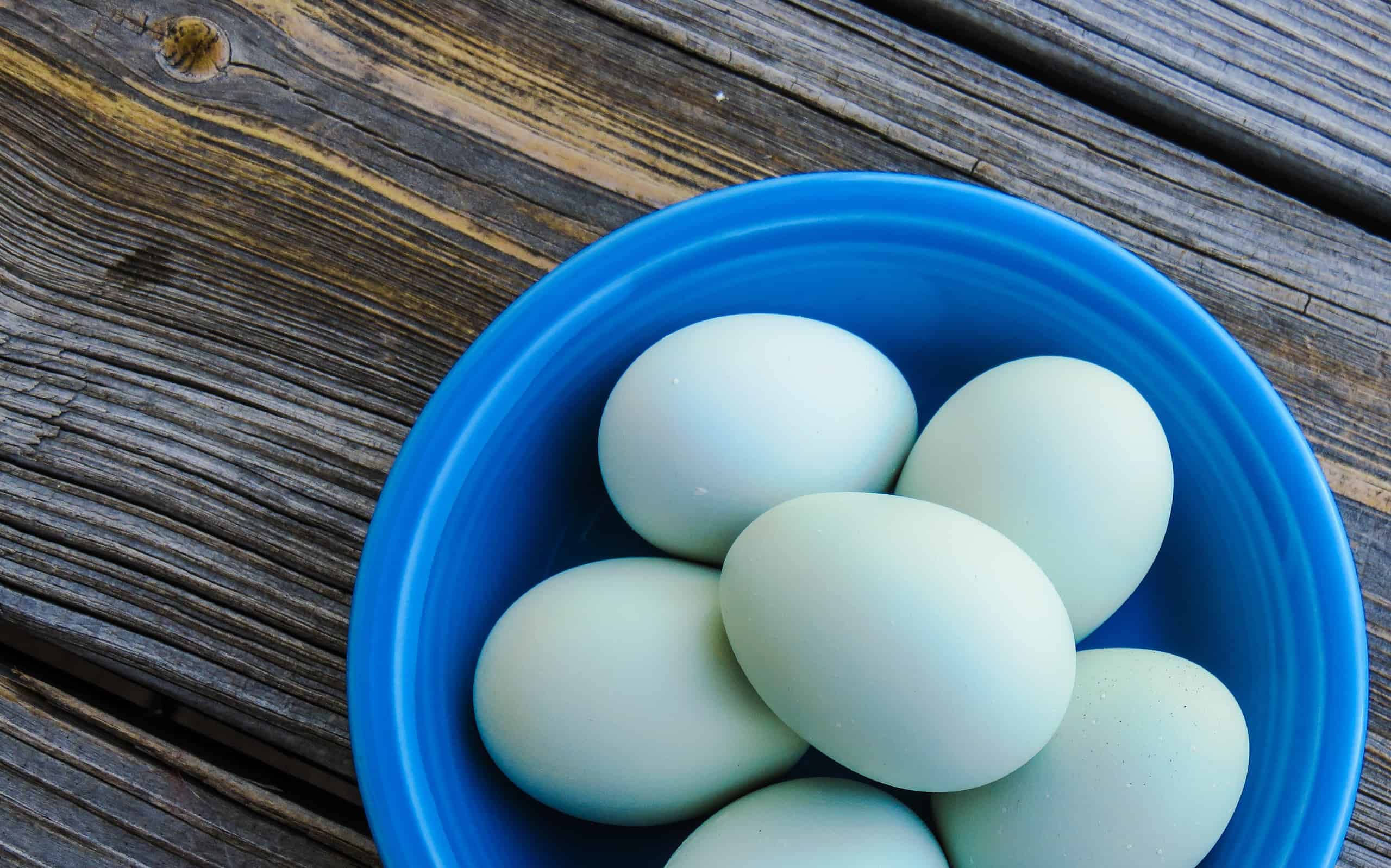If you’ve never heard of an Easter egger chicken, you’re in for a treat. These remarkable birds lay gorgeous bluish-green eggs, just as if they’ve been pre-dyed for an Easter egg hunting contest. On average, the Easter egger chicken’s lifespan is five to eight years, which is comparable to a typical chicken that lives three to seven years. However, owners report chickens of any breed can live longer if they have good genes and receive ideal care.
Many families have become interested in raising chickens at home out of a desire to avoid high food prices, eat more natural organic foods, and avoid inhumane treatment of animals. If that describes you, you’ll want to get to know Easter egger chickens. Read on to discover more about these unique birds.
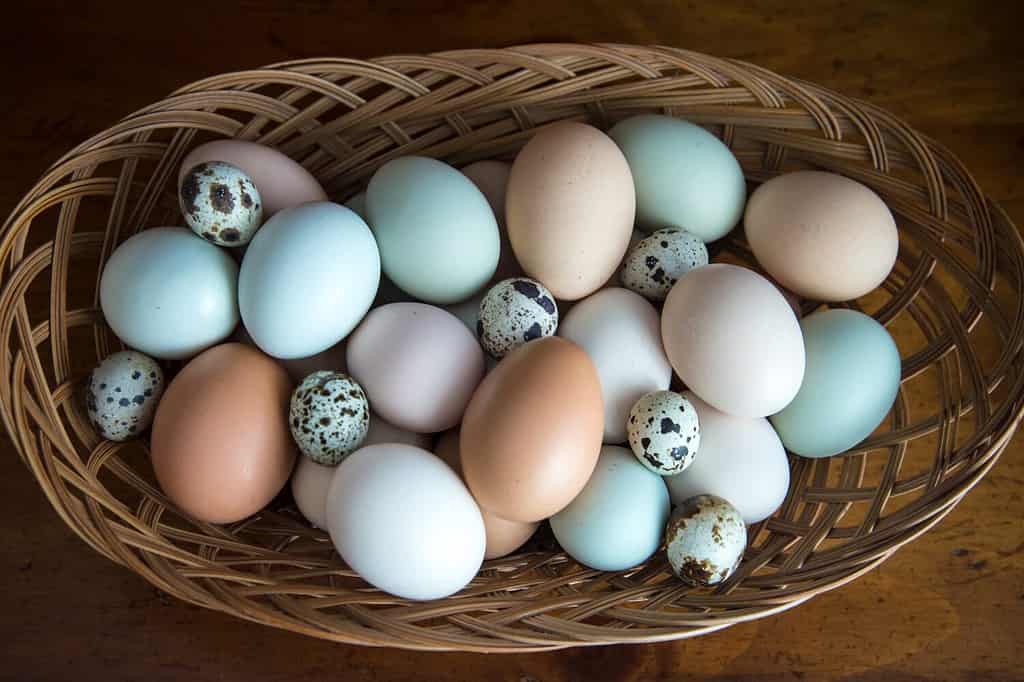
These are Easter egger eggs along with small spotted quail eggs.
©Rachelle Rae Denee/Shutterstock.com
Considerations Before Raising Chickens
If you’re new to raising chickens, here are a few things to consider before you take the plunge:
- Some localities do not allow chickens on your property. Check with your homeowner’s association and local government to find out what the rules are.
- Chickens are social. You need a minimum of three to six for them to be happy.
- They don’t lay eggs in the winter.
- You need to provide adequate space for them to forage.
- Proper fencing is vital not only to keep them from escaping but also to keep predators from getting to them.
- It is not necessary to have a rooster unless you are planning to breed chickens. If you or your neighbors don’t want to be woken up at the crack of dawn by crowing every morning, it’s better not to have a rooster.
- Their best egg-laying years happen when they are young and decline over time. You’ll need to keep getting new chickens as the old ones age and decide whether to keep the non-layers as pets or harvest them for meat.
- Chickens need food and water daily as well as regular cleaning of their coop. They also need to be monitored and treated for disease and parasites. If you’re a person who wants the freedom to travel on a whim, keeping farm animals is not for you.
Where Do Easter Egger Chickens Come From?
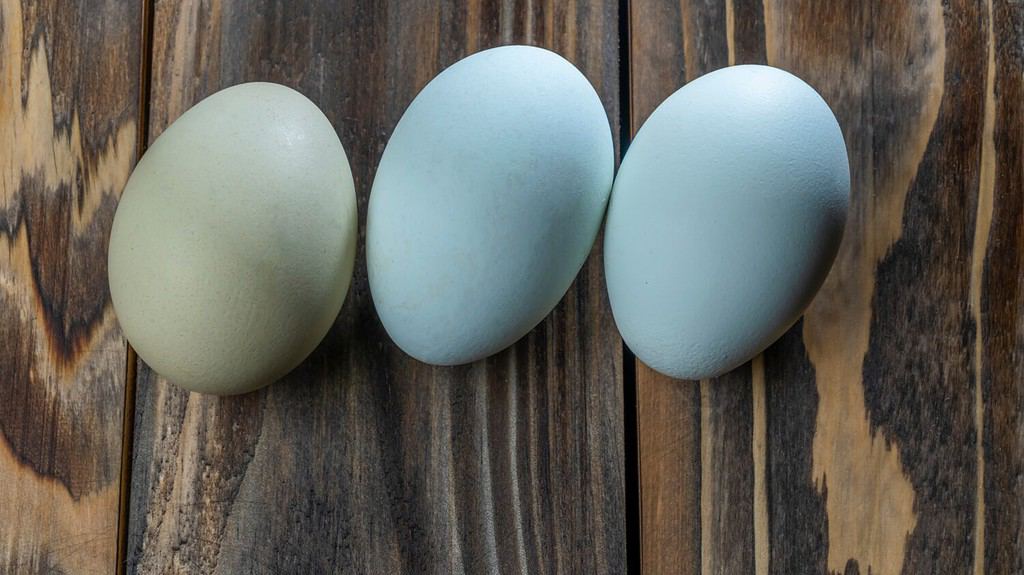
Easter eggers have a 50-75% chance of laying blue, green, or olive-colored eggs.
©kalyanby/Shutterstock.com
Araucana and Ameraucana chickens carry a dominant gene for producing blue eggs. When bred with other types of chickens they produce the Easter egger hybrid (sometimes called “Americanas” to distinguish them from Ameraucanas). They have a 50-75% chance of laying blue, green, or olive eggs and a 25% chance of producing eggs in peach, pink, or brown shades. While not recognized as a breed by chicken breeding associations, Easter eggers are fast becoming a beloved hybrid addition to the backyard barnyard.
What do Easter Egger Chickens Look Like?
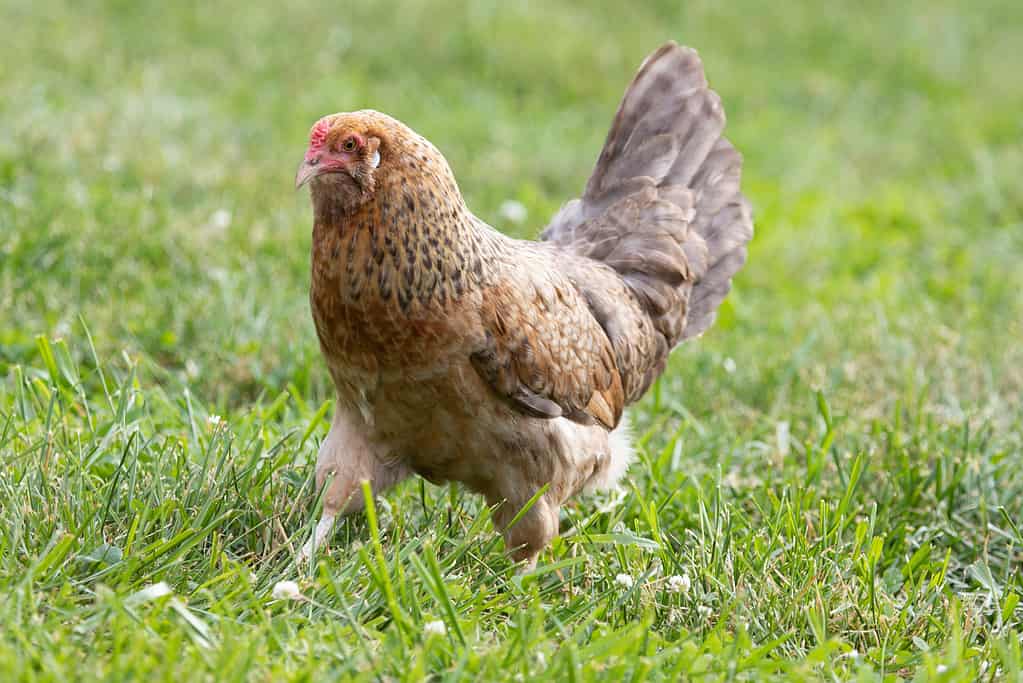
Easter eggers sometimes have a tail and other times are rumpless.
©JZHunt/ via Getty Images
Easter egger chickens weigh on average four to six pounds, making them medium-sized compared to other chickens. They’ve been described as muscular with a wide back and breast. Their legs can be yellow, green, blue, or slate gray. Sometimes they have “poofy” chipmunk-like cheeks, beards, pea combs, or feathered legs. Usually, they have a tail but sometimes they are rumpless. Their plumage can come in a wide range of colors and combinations: black, white, buff, blue, partridge, splash, lacing, and others. They have a pea comb: a small-to-medium-sized comb sitting low on their head, an adaptation that protects the comb from frostbite.
How do Easter Egger Chickens Compare to Other Chickens?
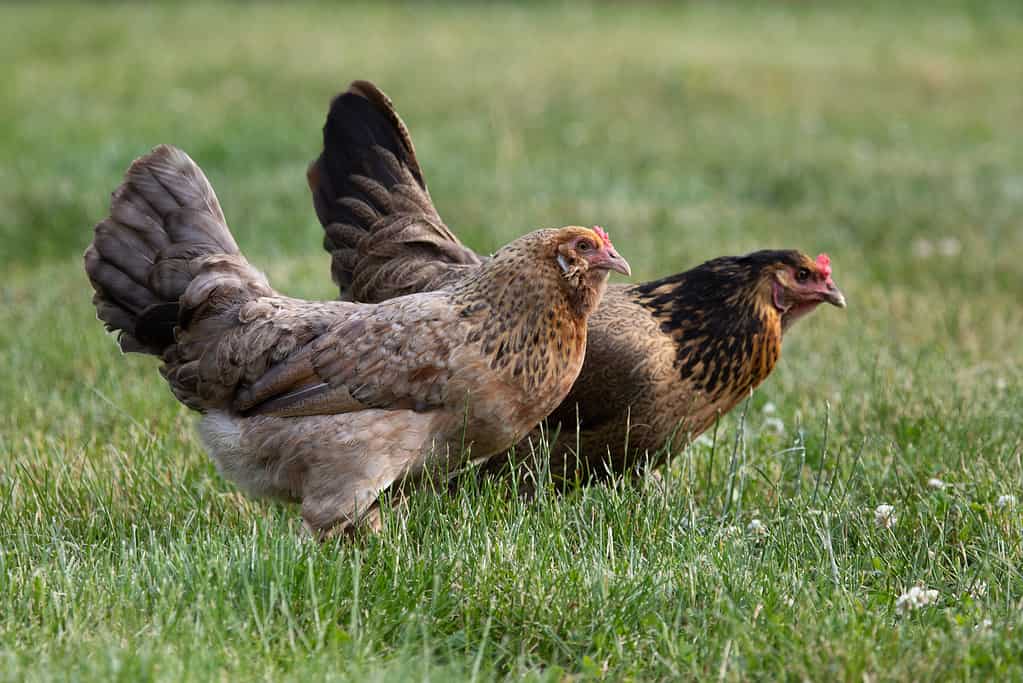
Easter egger hens make excellent free-range foragers.
©JZHunt/ via Getty Images
Owners say that Easter egger chickens tend to be hardier, more tolerant of temperature extremes, and more disease-resistant than many other types of chickens. This is probably because of their diverse gene pool. They do well as free-range chickens, being well-camouflaged and having hunter instincts. They lay eggs prolifically all year round and live longer: on average five to eight years instead of the three to seven years expected of other breeds, on average. Best of all for those who want a pet chicken, they’re gentle, tame, friendly, and relatively quiet – perfect for suburban backyards. If you’ve been thinking about keeping chickens, Easter eggers are well worth your consideration for their hardiness, long lifespan, beautiful eggs, and temperament.
Thank you for reading! Have some feedback for us? Contact the AZ Animals editorial team.

